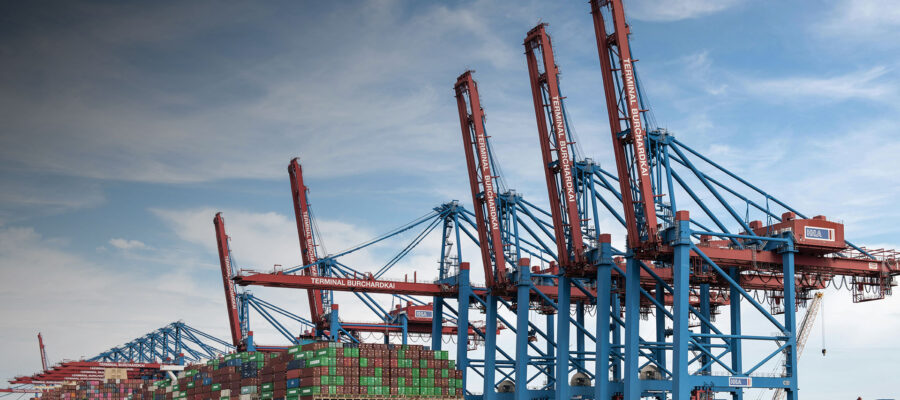This post has already been read 35538 times!
Supply chain visibility is key to supply chain resilience. Here are three steps to enhancing visibility and resilience.
Since the height of the COVID-19 pandemic, supply chain management has shifted from focusing on efficiency to resilience. Organizations understand they’ll see better long-term results by ensuring they can weather future disruptions rather than maximizing short-term productivity at all costs. Fewer have successfully achieved such resilience.
A lack of transparency is one of the most significant obstacles. Just 13% of procurement professionals have fully mapped their supply networks, and 71% have little to no visibility beyond their Tier 2 suppliers. Businesses hoping to develop resilient supply chains must start by addressing this gap. This will also provide a base on which to build more effective and efficient supply chains.
How Visibility Ensures Resilience
Supply chain resilience is largely a matter of being able to respond early and effectively to unexpected changes. Such detection and response are impossible without awareness beyond a company’s immediate suppliers. Disruptions can start as far upstream in the supply chain, such as an issue with raw materials, so if an organization cannot see these shifts when they occur, they cannot adapt in time to adapt and mitigate the impact.
Visibility is about more than predicting disruption. Early visibility helps businesses identify and implement better solutions to respond to and avoid or mitigate the disruption. Having access to a greater wealth of information makes it easier to determine the best path forward in a specific situation. That’s why supply chain leaders who’ve invested in end-to-end visibility were twice as likely to report no challenges from supply chain issues in 2022.
Higher transparency also facilitates risk identification and management for long-term optimization. The technologies necessary for this achievement naturally improve communication with multiple stakeholders, too, further driving agility.
How to Maximize Supply Chain Visibility
Visibility is not the only step toward supply chain resilience, such as improving agility and risk management, but visibility lays a critical foundation that empowers all the other elements that go into resilience. Here’s how businesses can significantly boost their visibility into their supply chains, and with it, their resilience.
Map Your Multi-Tier Supplier Network
Organizations can start by taking inventory of their current supplier networks. The easiest and most reliable way to do so is to employ supply chain mapping software.
Such software will grow to a $7 billion market by 2029, and it’s easy to see why. These automated tools generate detailed digital documents of every transaction along a material or product’s supply chain journey. As a result, they can automatically create a traceable record of a company’s suppliers and downstream partners.
This approach is preferable to manual methods for several reasons. First, it’s much faster. Secondly, automating data entry minimizes the chances of human errors that may result in unreliable maps. Maintaining all information in one place also enables easier analysis down the line.
Deploy IoT Solutions to Extend Visibility
Next, supply chains should bolster their maps with real-time information. The Internet of Things (IoT) is an indispensable resource here.
IoT sensors can upload shipment data like locations, package conditions and temperatures to the cloud in real time. Businesses can deploy similar technologies to track the location and maintenance of critical equipment like trucks, ships and manufacturing machinery. They can be alerted automatically of critical milestones such as gate-in and gate-out at distributions centers, and completed deliveries. As a result, supply chain leaders develop a comprehensive and up-to-the-minute view of their entire operations.
As impactful as IoT solutions can be in terms of visibility, they carry some unique cybersecurity risks. Considering how cyberattacks affected 2,769 entities in this industry in 2023, additional cybersecurity protections are essential. Any IoT adoption must go hand in hand with network monitoring, encryption and — ideally — zero-trust architecture.
Encourage Data-Sharing & Reciprocate
It’s worth noting that changes like IoT deployments and supply chain mapping will only improve visibility in areas where businesses have control. Complete transparency will require buy-in from the company’s partners.
Leaders should foster a spirit of collaboration and data-sharing between supply chain parties. Other businesses will likely only agree to give organizations such information if they also receive it, so these agreements must work both ways. A manufacturer must offer access to their own IoT data before requesting similar updates from a 3PL.
Such agreements are easiest when everyone uses common technologies. An impressive 55% of supply chain businesses have already deployed over 1,000 IoT devices, and another 38% have implemented between 500 and 1,000. Consequently, it’ll be difficult to enforce a singular technology platform. However, organizations can facilitate communication by using a common cloud solution or a digital supply chain network to view the data and relying on standard IoT transmission protocols. Some platforms enable sophisticated services that go beyond visibility and incorporate AI that can provide early warnings to potential issues and disruptions, and even suggest resolutions to resolve the issues.
Visibility Is Essential for Supply Chains Today
The past few years have highlighted how a strictly lean approach can upend supply chains when disruptions arise. Logistics networks must instead embrace resilience, and a key enabler of this is visibility. Without more transparency, organizations will struggle to optimize their operations and respond to incoming challenges, disruptions and supply chain shocks.
Ensuring visibility is not easy, but it is possible. Visibility is not the end but a means; there is much more organizations can do to build resilience. But these three steps are key, and give businesses a solid foundation on which to build and stay abreast of further developments, such as control towers, digital supply chain networks, and AI agents, to make their supply chains more agile, resilient, and shockproof.
- How to Use Predictive Analytics to Streamline Cross-Border Logistics - May 19, 2025
- The Role of Robotics in Advanced Packaging Systems - December 4, 2024
- Ensuring Supply Chain Resilience Through Enhanced Visibility - September 24, 2024



